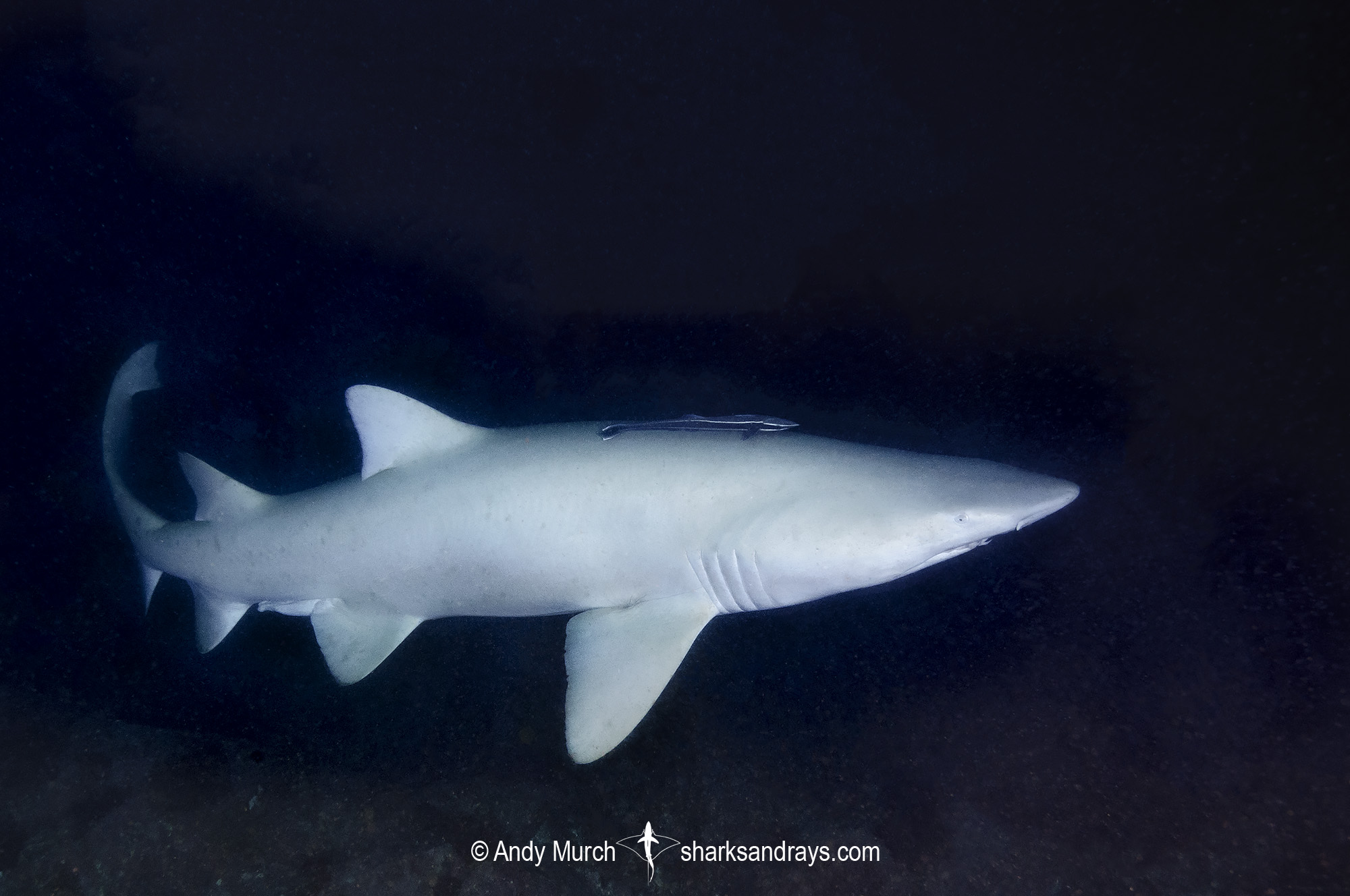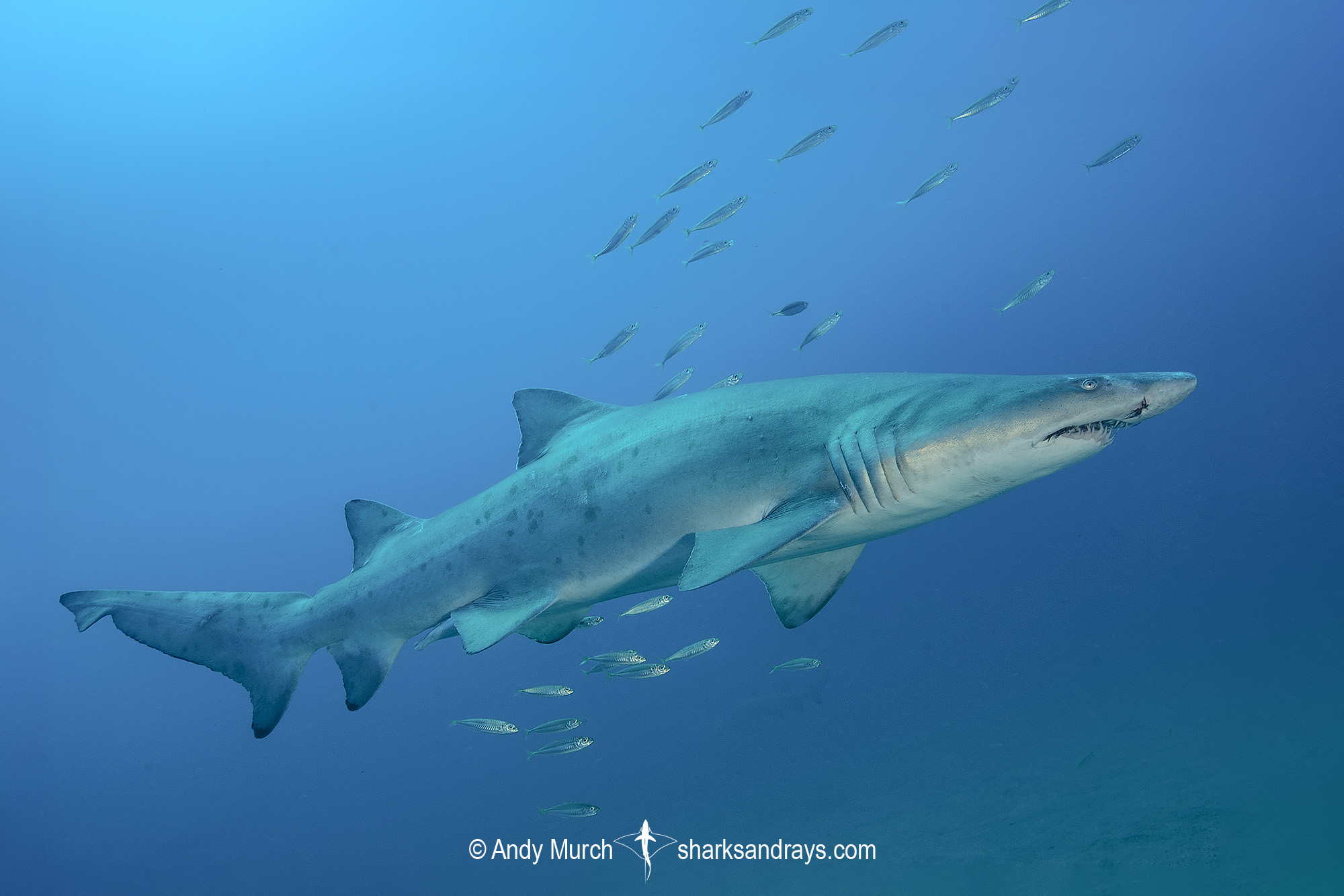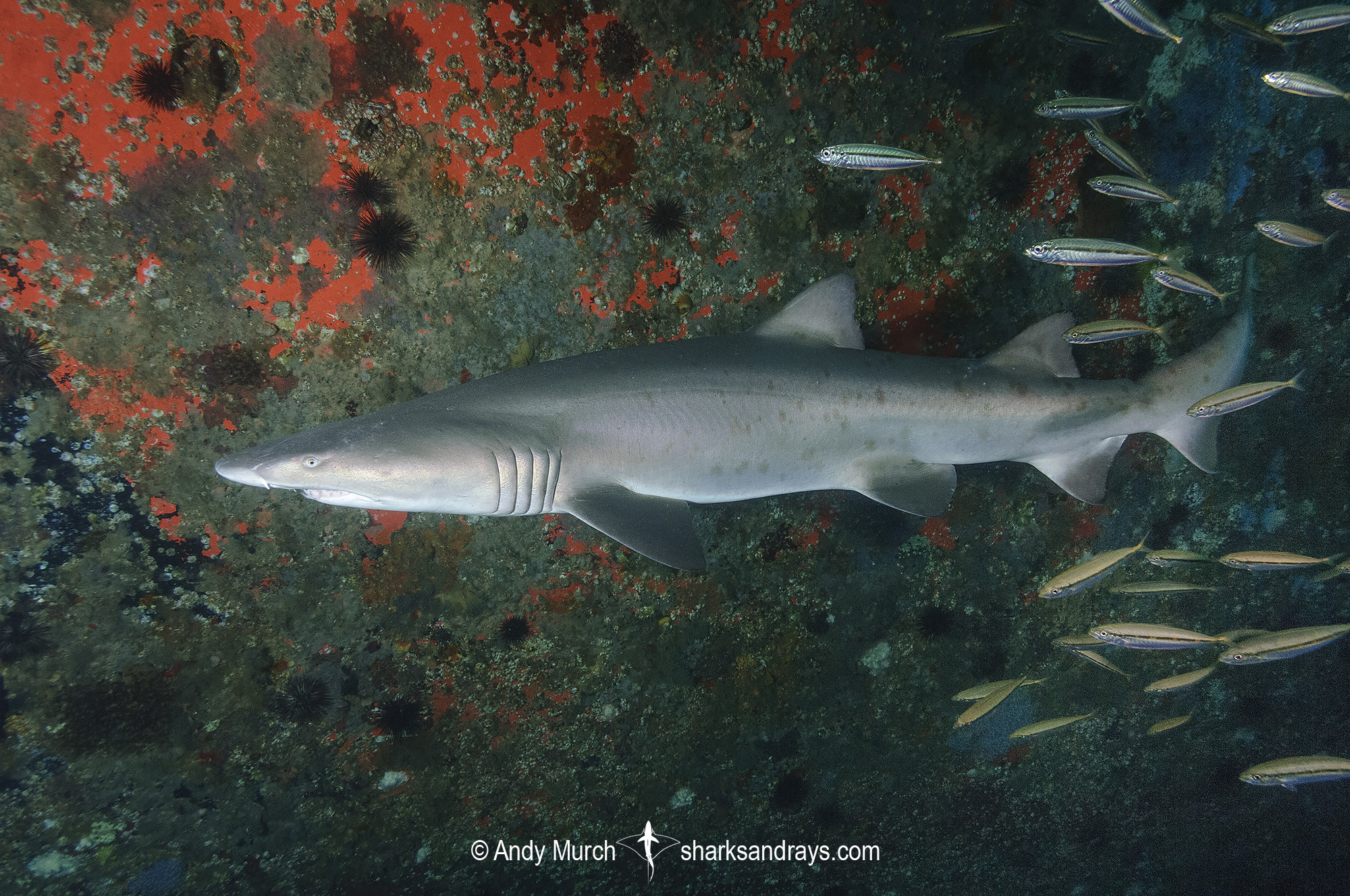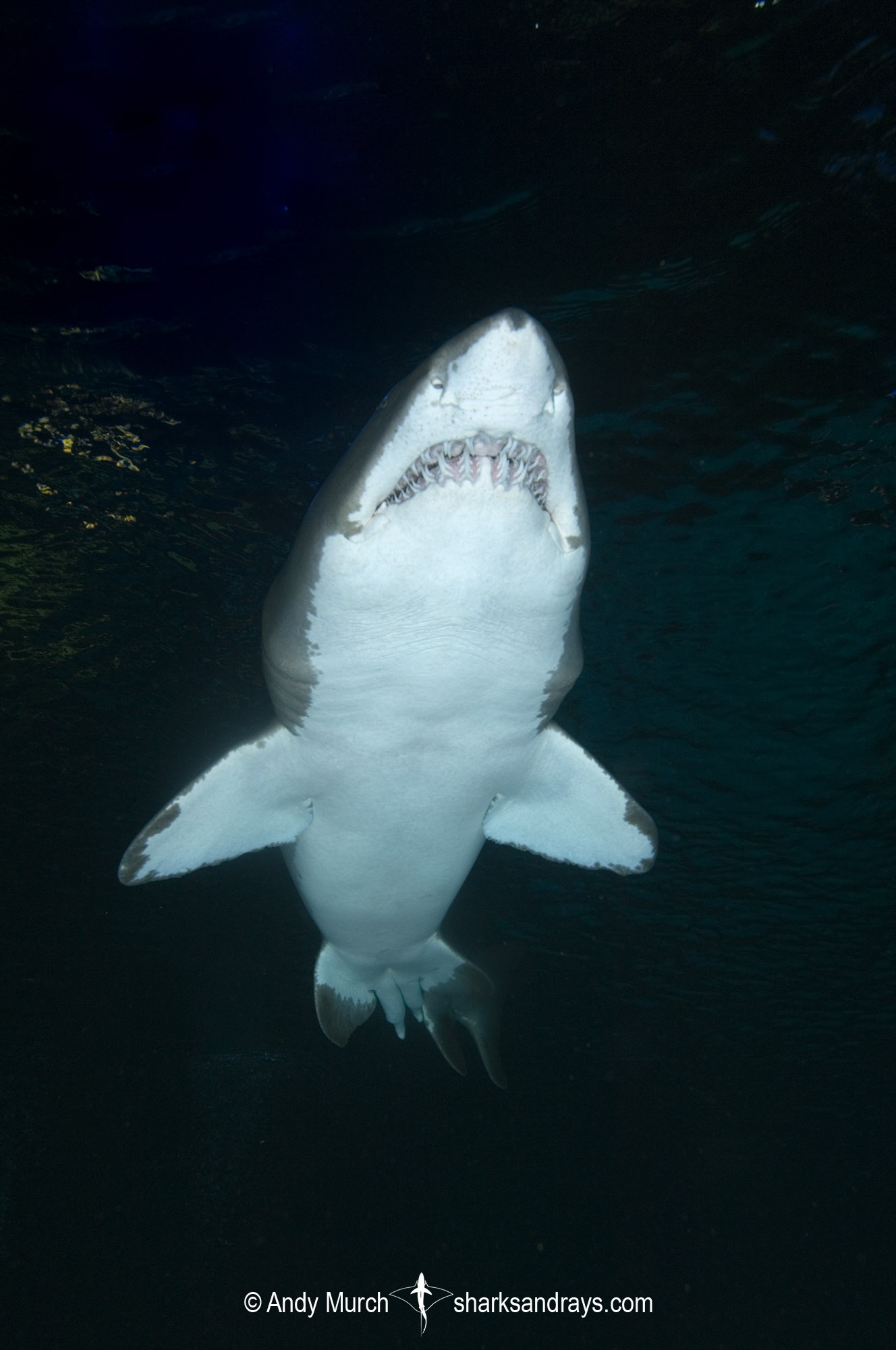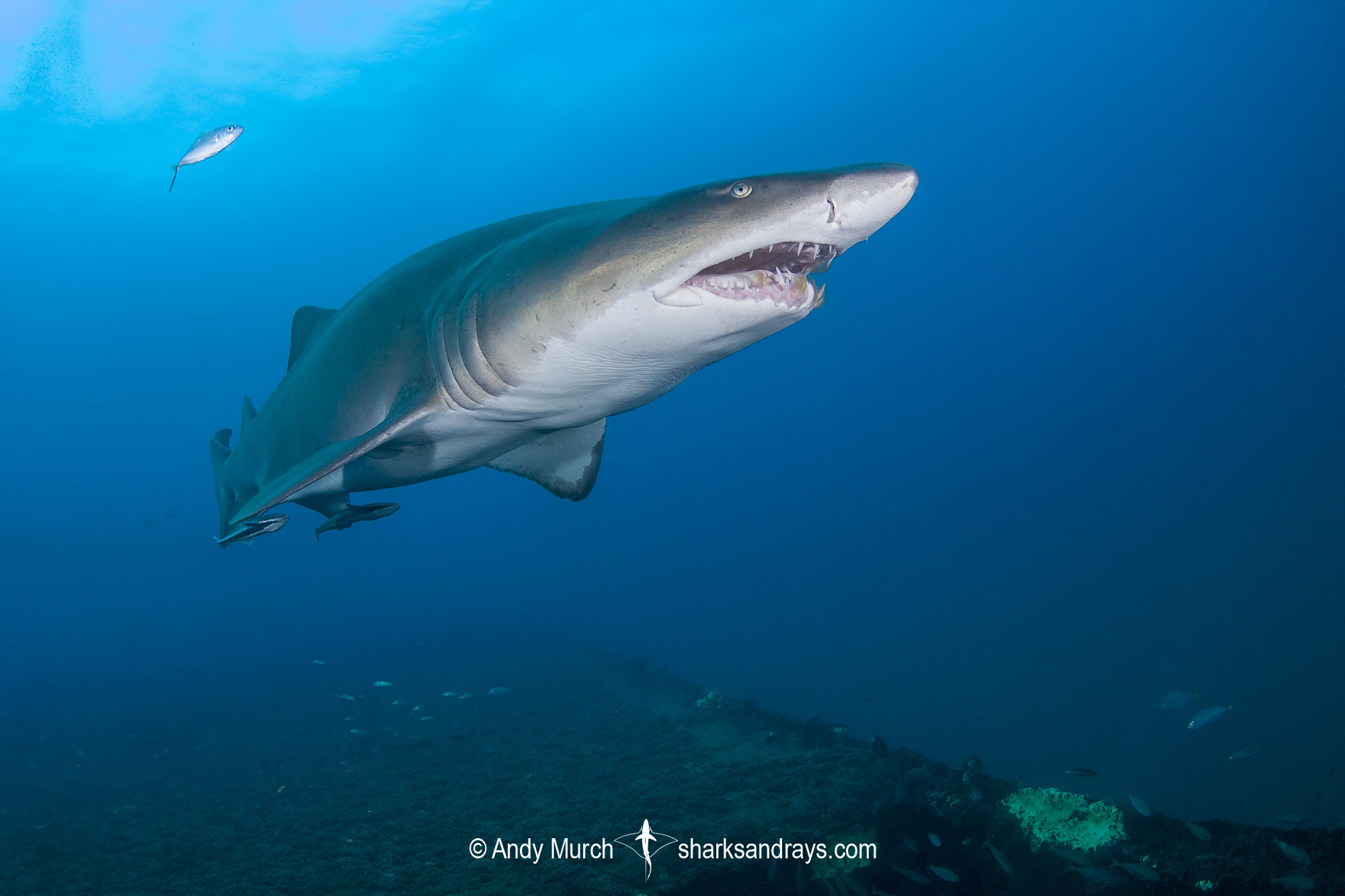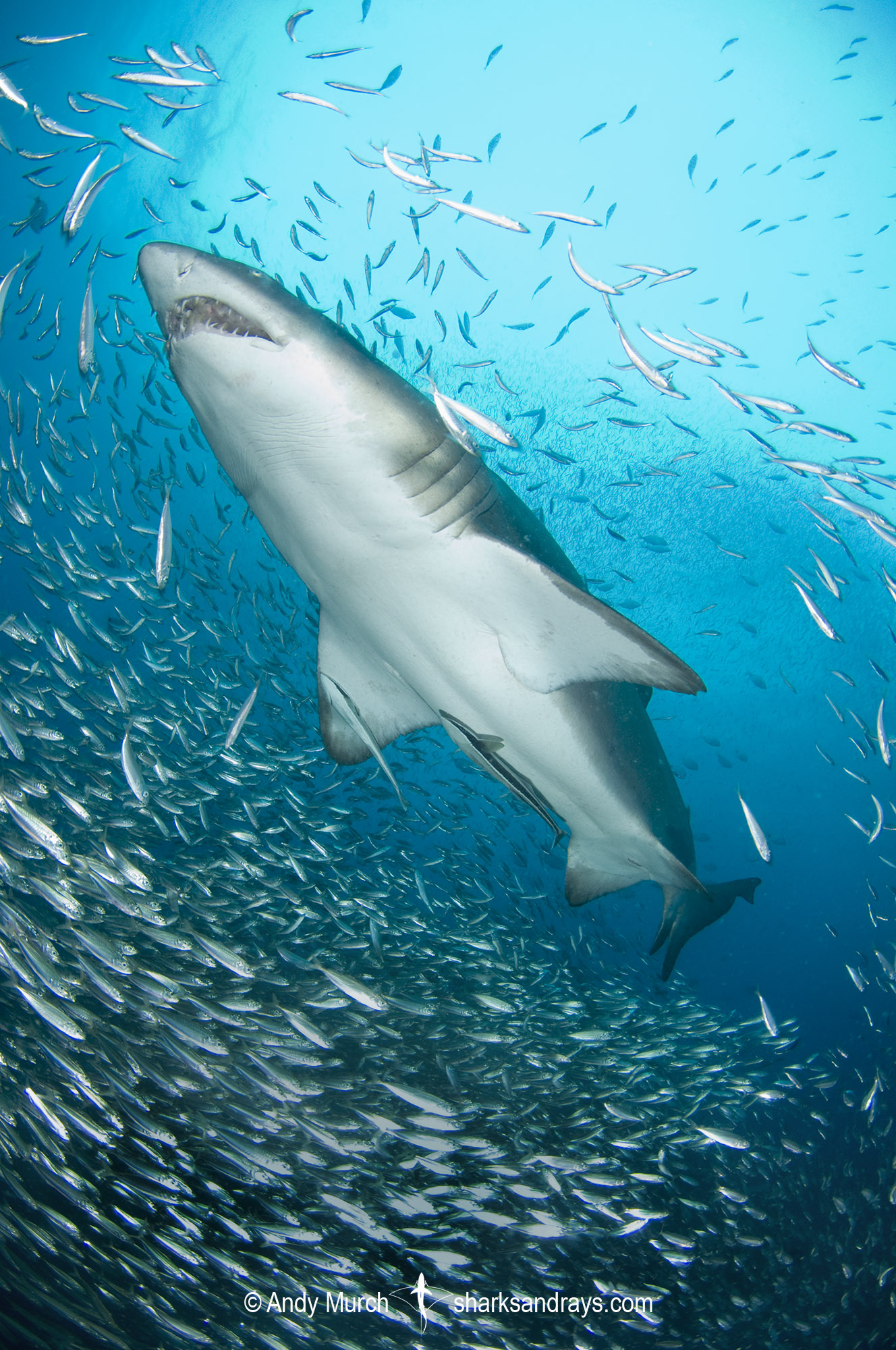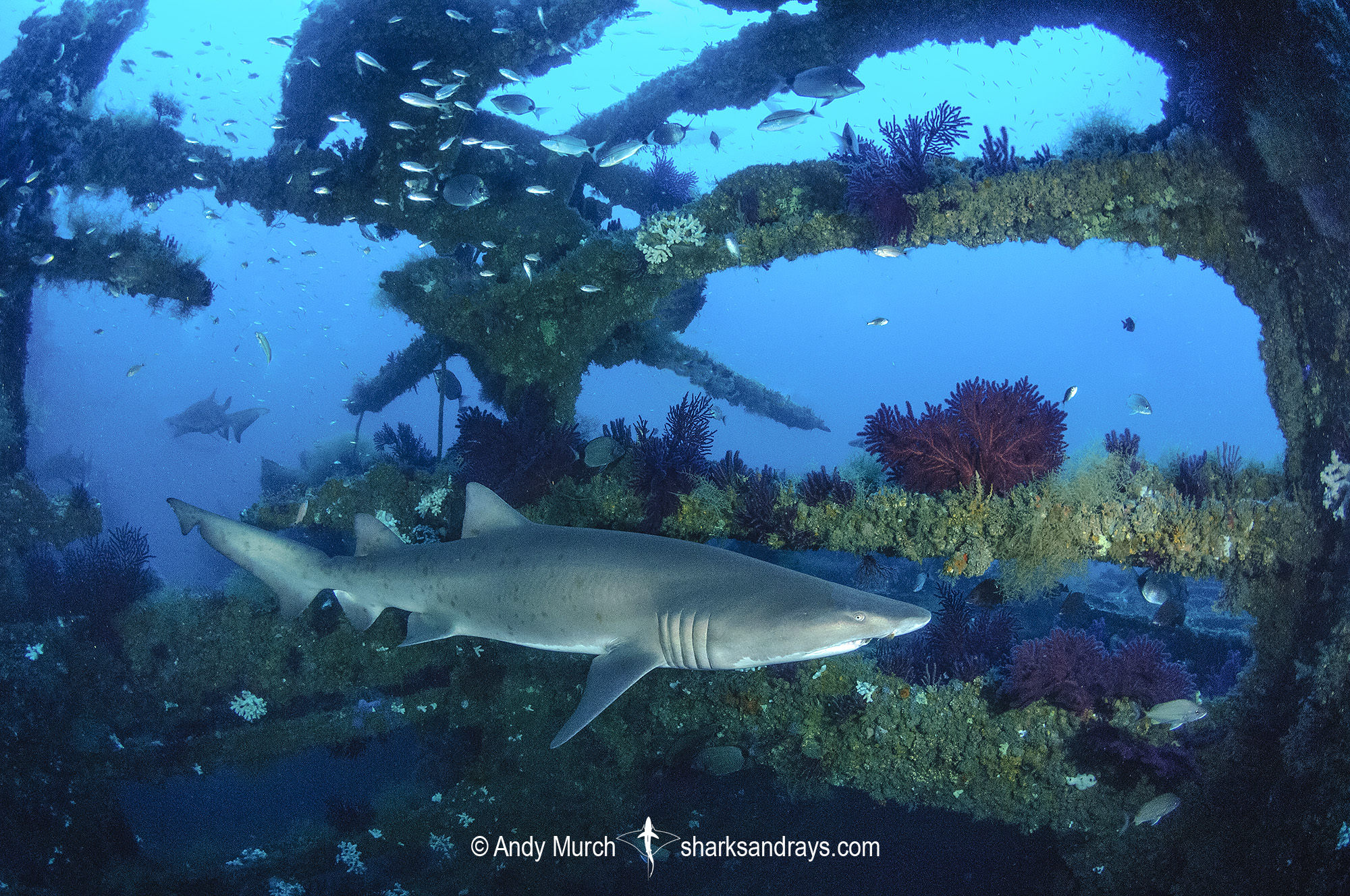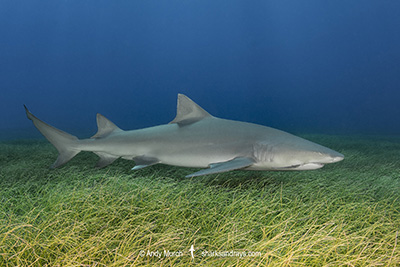Common names
Sandtiger Shark, Sand Tiger Shark, Raggedtooth Shark, Grey Nurse Shark.
Binomial
Carcharias taurus.
Synonyms
Carcharhinus taurus, Carcharias arenarias, Carcharias arenarius, Carcharias griseus, Carcharias littoralis, Carcharias owstoni, Carcharias platensis, Charcharias taurus, Eugmophodus taurus, Eugomphodus taurus, Lamna ecarinata, Odontaspis americanus, Odontaspis arenarius, Odontaspis cinerea, Odontaspis platensis, Odontaspis taurus, Squalus americanus, Squalus littoralis, Squalus lixa, Squalus macrodus.
Identification
Head dorsally flattened. Snout conical with a bluntly rounded tip. Lower jaw contains rows of thin curved teeth that are always visibible; snaggle-toothed. First dorsal fin origin roughly one fin length behind free rear tips of pectoral fins. Second dorsal fin almost as large as first dorsal. Second dorsal posterior to pelvic fin free rear tip. Heterocercal caudal fin has a small lower lobe. Upper caudal lobe has a deep subterminal notch.
Dorsal coloration greenish-grey, brown, or tan. Ventral surface off-white. Juveniles often have scattered dark spots or small blotches.
Size
Maximum size approximately 300cm. Size at birth 85-105cm.
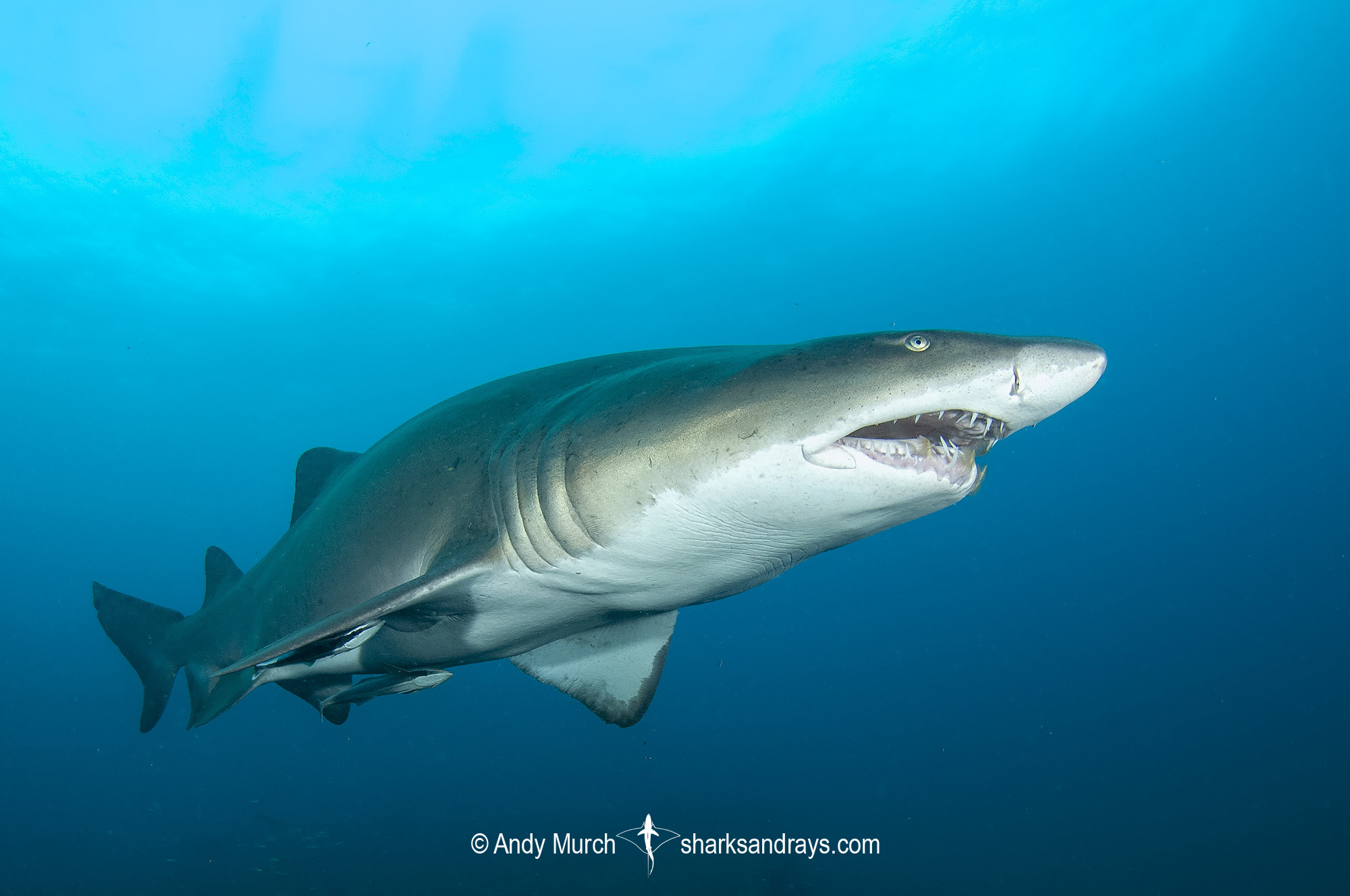
Conservation Status
CRITICALLY ENDANGERED
The Sand Tiger Shark (Carcharias taurus) is a targeted species and bycatch component in longline, gillnet, and trawl fisheries across it’s range, both at a commercial, artisanal, and recreational fishery level.
The population in east Australia has dropped by 80%. In the Northwest Atlantic and South Africa sandtiger populations have been reduced by 30-49%. In the Southwest Atlantic, Mediterranean, and the Arabian Seas region, it is either no longer or rarely encountered. In West Africa and Southeast Asia it is believed to have declined by 80%. Declines continue everywhere except in the remnant population in Western Australia which is slowly recovering. Conservation measures in the Northwest Atlantic, South Africa, and east Australia show signs of potential recovery in those regions as well.

Habitat
Coastal and offshore temperate/sub-tropical rocky reefs. Usually close to the substrate but sometimes found schooling in midwater. Surface to at least 191m.
Distribution
Widely distributed in coastal environments but absent from the eastern Pacific. In the western Pacific, the sandtiger is found from Japan, China and Australia. In the western Atlantic it is found from Maine to Florida including the Gulf of Mexico, And in Southern Brazil and Argentina. In the eastern Atlantic it occurs in the Mediterranean and along most of the African coastline. It is also found in the red sea and probably off of India.
Reproduction
Aplacental viviperous. Like other lamnids, sandtigers are oophagous; consuming large quantities of unfertilized eggs once their small yolk sac has been depleted. However, by the time they reach around 50mm, they have developed precocious dentition. Once they are 80-100mm long, they start seeking out smaller developing embryos to feed upon until they are the sole embryo within that uterus. This unusual feeding strategy is known as ’embryonic cannibalism’.
Diet
Sandtigers will readily feed on any available fish species within their habitat that are small enough to consume. There is a record of a sandtiger biting off the flipper of a loggerhead turtle.
Behavior
Sandtiger sharks have the unique ability (among sharks) to hover in the water column without sinking. To achieve this, they periodically swim to the surface and ‘gulp’ air; essentially turning their stomach cavity into a swim bladder.
They are also capable of creating a ‘whip crack’ sound with their tail when they move quickly from a stationary position. This may be incidental but it could be a way to shock or confuse prey fishes, or perhaps even a threat display.
Reaction to divers
Easily approached with slow non-threatening movements. Chumming is not necessary to encounter this species where it naturally occurs.
Diving logistics
There are numerous spots around the world where sandtigers can be reliably encountered.
In North Carolina, operators run day trips out of various ports to dive on wrecks that are scattered around the Outer Banks and the infamous Diamond Shoals. Many of the wrecks have resident populations of sandtiger sharks. The sharks sometimes move from one wreck to another but one that seems to be consistently good is the Carib Sea. Another good wreck for sandtigers is the Proteus.
In South Africa, Sandtigers (locally known as raggies or raggedtooth sharks) are seasonally encountered at Protea Banks. Port Elizabeth is another very good South African sandtiger shark diving spot.
In Australia, sandtigers (locally known as grey nurse sharks) are common off of numerous spots along the coast of New South Whales. One of the best places to see them is at Fish Rock; an exceptional dive site that generally has lots of sandtigers in the valleys around the central island, and a cave with a large entrance where they often congregate. The site is also home to a variety of wobbegong species, and large sharkfin guitarfishes.
Other popular east Australian spots include Julian Rocks in Byron Bay, Broughton Island near Nelson Bay, and Wolf Rock up in Queensland. The best time to find them in Australia is during the Austral winter; June-September.
Similar species
Smalltooth Sandtiger Distinguished by heavier body, less pronounced snaggletooth look, and second dorsal which is noticeably smaller than the first.
Lemon Shark Similar in coloration and in having two dorsal fins of equal size. Distinguished by broadly rounded snout, and more anterior pectoral fins that originate below the third gill slit.


